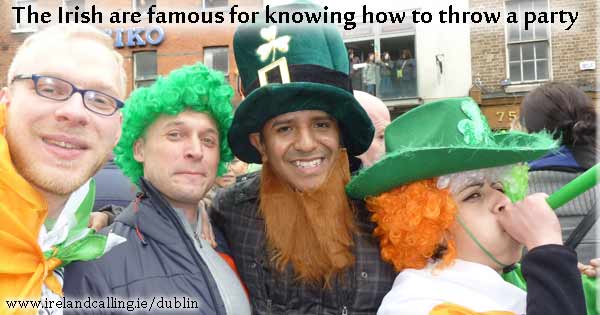Millions of tourists visit Dublin every year and find that there is something there for everyone.
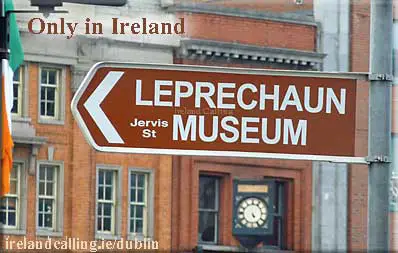
You can enjoy the nightlife and music of Ireland’s capital city, pursue the country’s fascinating culture and history, or just unwind with a drink and chat with the friendly locals.
Whatever your interests, the city’s host of attractions will keep you entertained throughout your stay.
St Patrick’s Day in Dublin
The St Patrick’s Festival has grown into one of the biggest carnivals in the world over the last 20 years. Millions of people from all over the world descend on Dublin to soak up the atmosphere and celebrate their Irish roots.
More on St Patrick’s Festival here.
The Guinness Storehouse
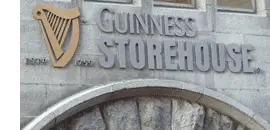 Many visitors to Dublin will head to the Guinness Storehouse, which is the most visited tourist attraction in Ireland. The inside of the building is actually shaped like a pint of Guinness and there are several levels for visitors to explore.
Many visitors to Dublin will head to the Guinness Storehouse, which is the most visited tourist attraction in Ireland. The inside of the building is actually shaped like a pint of Guinness and there are several levels for visitors to explore.
There are bars, restaurants, exhibitions and a unique selection of Guinness merchandise available.
The Gravity bar at the top of the building offers fabulous views of the entire city. There are also live performances by musicians and singers from around the world.
More on the Guinness Storehouse
Kilmainham Gaol (Jail)
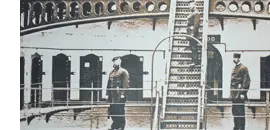 Kilmainham Gaol is an extremely significant building in Irish history. It is where several of the leaders in the fight for independence were incarcerated and in some cases executed.
Kilmainham Gaol is an extremely significant building in Irish history. It is where several of the leaders in the fight for independence were incarcerated and in some cases executed.
It closed in 1924 and is now a museum. Visitors can take a guided tour and experience the conditions and fear that prisoners would have endured.
More on Kilmainham Gaol here.
Glasnevin Cemetery
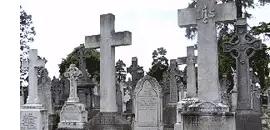 Several of Ireland’s most famous sons and daughters are buried at Glasnevin Cemetery. From political leaders and fighters for independence to cultural icons such as the Dubliners’ Luke Kelly.
Several of Ireland’s most famous sons and daughters are buried at Glasnevin Cemetery. From political leaders and fighters for independence to cultural icons such as the Dubliners’ Luke Kelly.
The cemetery also features a museum. Visitors can take a guided tour around the famous tombstones.
More on Glasnevin Cemetery here.
National Museum of Ireland
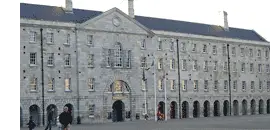 The National Museum of Ireland is a treasure trove of artefacts that each tell their own story of Irish history. Three of the four sites that make up the museum are in Dublin.
The National Museum of Ireland is a treasure trove of artefacts that each tell their own story of Irish history. Three of the four sites that make up the museum are in Dublin.
The exhibitions in the three Dublin sites relate to archaeology, art and natural history.
More on The National Museum of Ireland.
The James Joyce tour
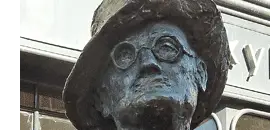 An alternative way to take in Dublin might be to see it through the eyes of Leopold Bloom, lead character of James Joyce’s novel, Ulysses.
An alternative way to take in Dublin might be to see it through the eyes of Leopold Bloom, lead character of James Joyce’s novel, Ulysses.
The James Joyce Centre offers guided tours and has exhibitions of James Joyce and Ulysses.
More on the James Joyce Centre.
National Botanic Gardens
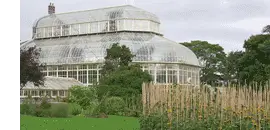 Nature lovers will love the National Botanic Gardens.
Nature lovers will love the National Botanic Gardens.
They contain several thousand plants and millions of plant specimens. There are both native and tropical plants and guided tours are available.
It is a perfect place for people wanting to get away from the hustle and bustle of the city.
More on the National Botanic Gardens of Ireland.
National Gallery of Ireland
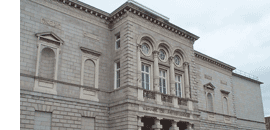 The National Gallery of Ireland is home to a huge collection of art from all over Western Europe.
The National Gallery of Ireland is home to a huge collection of art from all over Western Europe.
The pieces range from the middle ages up to the 20th century. The exhibitions include works from Picasso, Monet, Caravaggio, Hogarth, Gainsborough, Goya and many others.
There are exhibitions dedicated to the art of several countries including, France, Spain, Italy, Germany, the UK and of course Ireland. It is considered to have the finest collection of Irish art anywhere in the world.
Trinity College
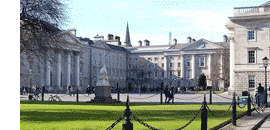 Trinity College, Dublin is where many of Ireland’s most famous cultural icons were educated.
Trinity College, Dublin is where many of Ireland’s most famous cultural icons were educated.
Oscar Wilde, Jonathan Swift, Bram Stoker and Samuel Beckett are all former students.
Today it remains one of Ireland’s most prestigious colleges and is also a place of interest for many tourists. Visitors can walk around the site and take in the magnificent buildings and facilities.
The Old Library is a 200ft long room and has two tiers of oak bookcases which hold more than 200,000 books. It is home to the Book of Kells, which is an ancient manuscript that is thought to date back to 800AD. More on the Book of Kells.
The college’s Douglas Hyde Gallery is home to one of the finest modern art collections in Ireland. It features work from well known artists and emerging talent from Ireland and abroad.
1916 Rebellion Tour
See first hand some of the key sites of the Easter Rising on the brilliant walking tour led by Dublin historian Lorcan Collins. Lorcan’s vast knowledge of the Rising and the city make him the perfect guide.
He also has a clear passion for the subject and delivers his information with a few comical stories and local legends.
More on the Lorcan Collins 1916 Rebellion Tour.
Walks
Tourists who like to take in a city on foot will be able to walk past many attractions in and around Dublin’s city centre. O’Connell Bridge, which crosses the River Liffey is a popular starting point.
It is home to statues of political leaders such as Daniel O’Connell and Charles Parnell and is close to the Dublin General Post Office, which was the scene of the Easter Rising.
St Stephen’s Green is a park in the middle of the city. Visitors can enjoy a walk through the trees and beautiful flower displays.
There are a number of statues and monuments to key figures in Ireland’s history in the park.
Georgian architecture
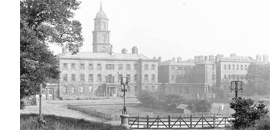 Dublin boasts some fine examples of Georgian architecture including buildings such as The Four Courts, The Custom House, and Rotunda Hospital.
Dublin boasts some fine examples of Georgian architecture including buildings such as The Four Courts, The Custom House, and Rotunda Hospital.
Elsewhere, the terraced townhouses on Baggot Street, Lesson Street and Merrion Square are part of Ireland’s heritage and provide fascinating walks through the city.
Phoenix Park
 Phoenix Park covers 1,752 acres , making it one of the largest parks in Europe within city boundaries.
Phoenix Park covers 1,752 acres , making it one of the largest parks in Europe within city boundaries.
It is double the size of Central Park in New York. About 30% of it is covered by trees.
The home of the Irish President is in Phoenix Park, as is the residence of the American ambassador. The park is also home to Dublin Zoo, which is one of the most visited attractions in Ireland.
Phoenix Park was established in 1662 by James Butler, Duke of Ormond, and was initially a Royal deer park. A herd of fallow deer still live in the park today.
There is plenty of wildlife in the park and one particular section, Furry Glen, is a conservation area that is home to numerous species of mammals and birds.
Dublin Nightlife
Dublin is famous for its nightlife. There is a selection of pubs and clubs that cater for many different tastes, from families looking for a bite to eat, to lovers of live Irish music, to stag and hen parties.
The Temple Bar area is hugely popular with tourists and includes the famous Temple bar. It is worth a visit but gets extremely busy.
There are also several traditional pubs that are not so hectic where tourists can share a drink with the locals.
Pubs such as Kehoe’s, the Stag’s Head and O’Donoghue’s, which is where famous musicians such as the Dubliners and Christy Moore regularly performed, are worth a visit.
There are several quality restaurants, theatres, cinemas and comedy clubs around the city centre.
Dublin Castle
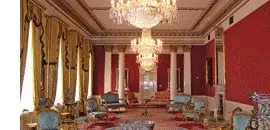 The castle was built in 1204 and played a huge role in Ireland’s history for hundreds of years. It was fought over and conquered several times.
The castle was built in 1204 and played a huge role in Ireland’s history for hundreds of years. It was fought over and conquered several times.
The area covers 11 acres and today the grounds contain The Garda (police) Museum, the Revenue Museum, two cafes, two gardens and the most important state rooms in the country.
It is free to walk along the grounds of the castle and some of the museums, but there is a charge for a guided tour of the state apartments.
Croke Park Museum
 Sports fans will enjoy the Croke Park Museum. Croke Park is an 82,000 seat stadium that hosts Gaelic football and Hurling matches as well as a host of other events.
Sports fans will enjoy the Croke Park Museum. Croke Park is an 82,000 seat stadium that hosts Gaelic football and Hurling matches as well as a host of other events.
There is an exhibition of the Croke Park timeline, which documents a number of events from the opening of the stadium up to the present day.
As well as iconic sporting imagery, there are also cultural and social significance to the stadium which is included in the timeline.
There are also temporary exhibitions which are always popular.
The Aviva Stadium
Dublin’s other major stadium is the Aviva Stadium on Lansdowne Road. It was built in 2007 when the previous Lansdowne Road stadium was demolished. It has a capacity of 51,700 and is home to the Ireland rugby and football teams.
It is Ireland’s only UEFA Elite stadium and hosted the 2011 football Europa League final.
Singers such as Madonna, Lady Gaga, Michael Bublé, Neil Diamond and Rihanna have all performed concerts at the stadium.
Sea Safari
At Dublin Bay there is a chance to go on a Sea Safari. There are a number of different tours of the area that visitors can choose from. They take in Dublin Port and the River Liffey.
Tourists can take in the local scenery and wildlife while the guides give a history of the docks from the 17th century right up to the present day.
The ghost bus
People looking for a more light-hearted way to spend their day might want to take a trip on Dublin’s Ghost Bus. It takes you on a tour of some of the most spooky areas of the city.
The guide entertains passengers with stories of Bram Stoker, the Irish novelist who wrote Dracula, Dr Glossey, the anatomist who paid body snatchers for fresh corpses and several more frightening tales.
The bus itself is a gothic mobile theatre and helps to set the atmosphere for the tour.
The Dublin Rock tour
Fans of rock music would love the Dublin Rock tour. It takes the passengers on a journey through the backgrounds of some of Ireland’s most famous musical exports such as U2, Van Morrison, Phil Lynott of Thin Lizzy, and Rory Gallagher.
The tour is an audio and visual experience that takes in the sights of Irish musical history.
More top attractions in Ireland
Galway named as one of the ‘best trips’ in the world by top American travel magazine

